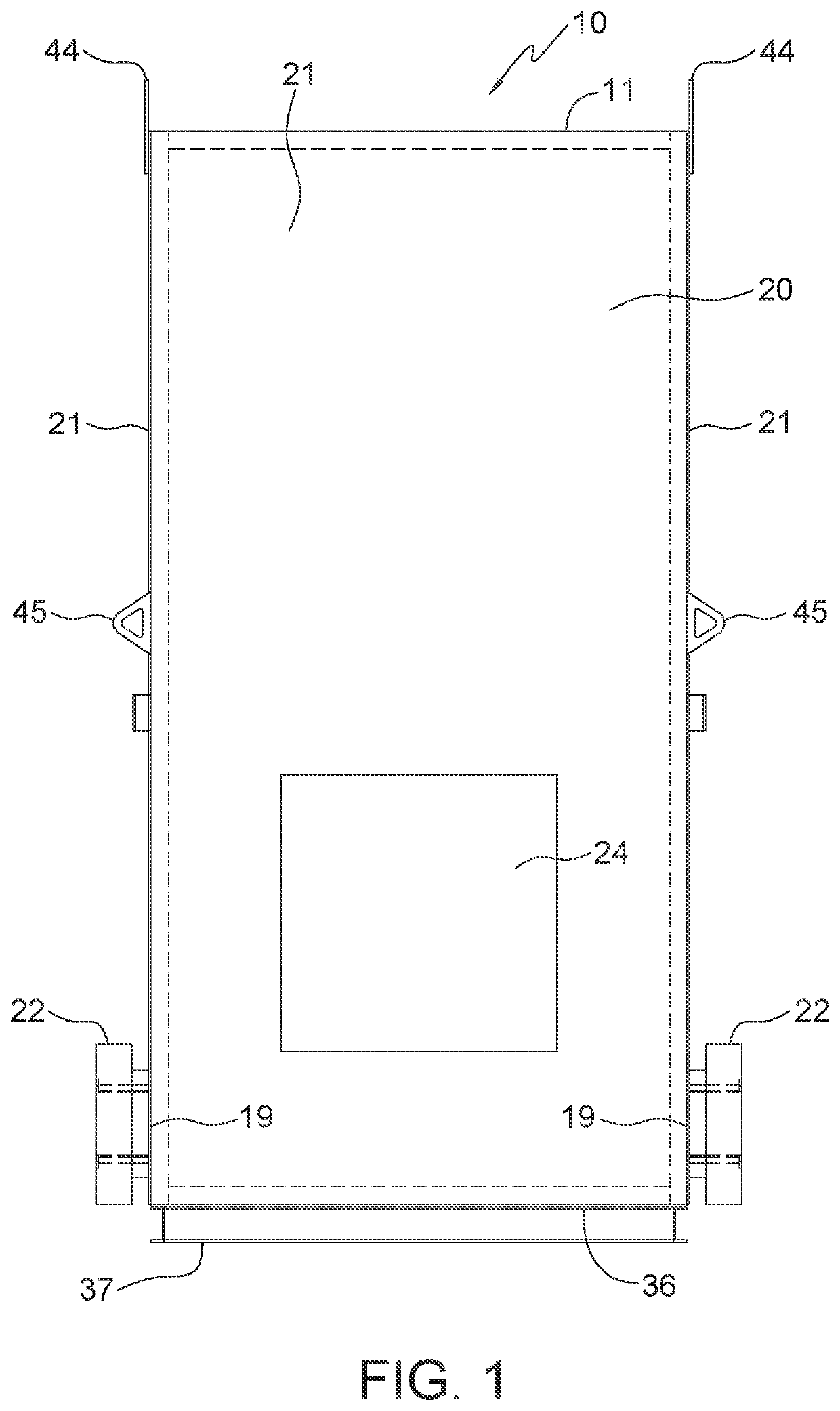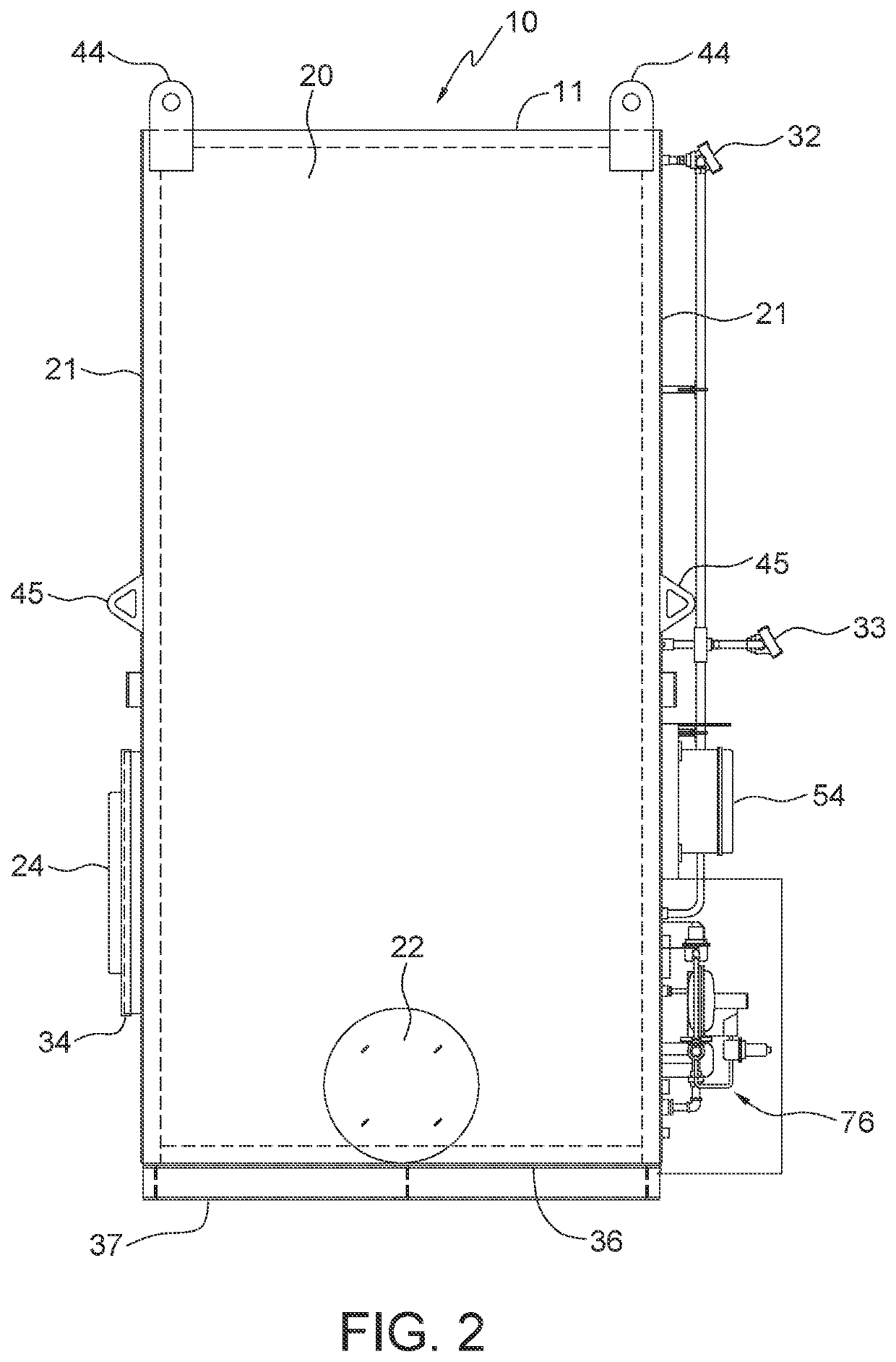Waste Gas Combustor
a combustor and waste gas technology, applied in the field of combustor, can solve the problems of environmental regulations, simple venting of waste gas to the atmosphere, and environmental hazards, and achieve the effect of reducing the length, diameter and cost of the piping
- Summary
- Abstract
- Description
- Claims
- Application Information
AI Technical Summary
Benefits of technology
Problems solved by technology
Method used
Image
Examples
Embodiment Construction
[0055]In this description, references to “one embodiment”, “an embodiment”, or “embodiments” mean that the feature or features being referred to are included in at least one embodiment of the technology. Separate references to “one embodiment”, “an embodiment”, or “embodiments” in this description do not necessarily refer to the same embodiment and are also not mutually exclusive unless so stated and / or except as will be readily apparent to those skilled in the art from the description. For example, a feature, structure, act, etc. described in one embodiment can also be included in other embodiments but is not necessarily included. Thus, the present technology can include a variety of combinations and / or integrations of the embodiments described herein.
[0056]Referring to the Figures, an embodiment of an improved combustor 10 is shown. Referring to FIGS. 1 to 6, a first embodiment of combustor 10 is shown, which can further comprise of base box 20 that can comprise of base plate 36 a...
PUM
 Login to View More
Login to View More Abstract
Description
Claims
Application Information
 Login to View More
Login to View More - R&D
- Intellectual Property
- Life Sciences
- Materials
- Tech Scout
- Unparalleled Data Quality
- Higher Quality Content
- 60% Fewer Hallucinations
Browse by: Latest US Patents, China's latest patents, Technical Efficacy Thesaurus, Application Domain, Technology Topic, Popular Technical Reports.
© 2025 PatSnap. All rights reserved.Legal|Privacy policy|Modern Slavery Act Transparency Statement|Sitemap|About US| Contact US: help@patsnap.com



